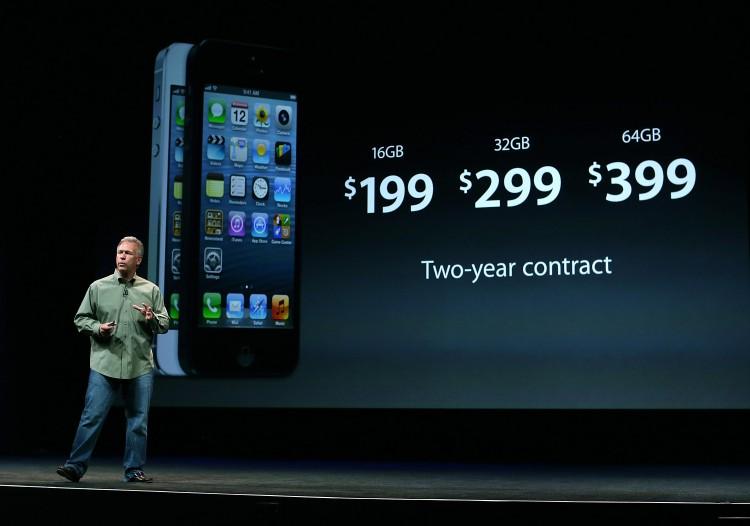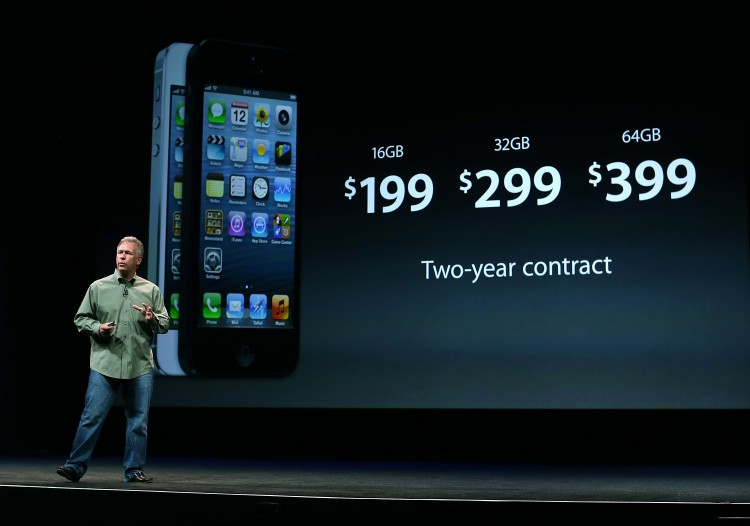After 12 months of enduring criticism for issuing a sell call on Apple, Edward Zabitsky of ACI Research was vindicated in January 2013. Zabitsky reiterated his sell call in January 2012 and stuck to his guns—eventually outperforming the market by 16 percent.
Zabitsky issued the sell recommendation with a $270 price target on Jan. 25, 2012, and was widely ridiculed as the stock was then trading at $447. He endured more criticism as the year progressed, especially when Apple rallied to an all-time high of $702 in September 2012, following the release of its iPhone 5.
“Does anyone care what Ed Zabitsky says about Apple?” asked CNN’s Philip Elmer-DeWitt in February of last year. In April, Elmer-DeWitt blasted Zabitsky again after shares rallied to $644.
“We got yet another Apple note from Zabitsky on Thursday. Same $270 price target. Same advice to sell the stock short. No apology to anybody who might have followed his earlier advice and lost their shirt.”
On March 1, 2013, Apple’s shares hit a 52-week low of $430, losing 1.8 percent. Shares are down another 1 percent in early New York trading March 4. While Apple has not reached Zabitsky’s price target yet, his call is profitable since Jan. 25, 2013, precisely one year after he told clients to short-sell the stock.
“I was right last year. I’ve been right over the last year, that’s all you can say,” Zabitsky told the Epoch Times, saying that his other stock picks are actually doing better. According to Starmine, a service provider for professional investors, Zabitsky was the best industry stock picker for semiconductors and semiconductor equipment over 2012.
In his note from last year, as quoted by CNN Money, he cited widely available wireless internet as one of the reasons why Apple would soon run into trouble: “The internet is the great equalizer. It saved Apple during the rise of the wired broadband internet. It will level the playing field for other vendors with the rise of the true mobile broadband internet.”
“People realize they can get the internet properties that they want, the key ones [Facebook, YouTube, Google Maps, Netflix, ESPN] they can get these basically anywhere,” he explained in a phone interview on March 1, 2013.
Long Term Investing Painful
Perhaps Mr. Elmer-DeWitt should have taken Mr. Zabitsky’s investment time horizon more seriously.
“My targets are based upon my expectations for the business over a two year time frame. They are not based upon the current share price,” Zabitsky personally told Elmer-DeWitt last year, according to a CNN post. This illustrates the old investing adage that long-term investing can be very painful.
If you have a contrarian call, you often have to wait a long time before the market follows suit. If your analysis is correct, you make money. If your analysis is incorrect, you will have already lost a lot of money before you realize it.
Before Apple released its latest earnings in January 2013, Zabitsky was one of only two analysts who had a sell rating on the stock. All other 48 analysts had a buy rating, with Topeka’s Brian White looking for a price target of $1111.
While the absolute gain of selling the shares on Jan. 25, 2012, might have been small, in professional investing, everything is measured relative to the rest of the market. The NASDAQ composite index, where Apple has a heavy weighting, is up 12.5 percent from Jan. 25, 2012, to the close of March 1, 2013.
Apple stock is down 3.6 percent during the same time. This relative difference of 16.1 percent is a lot for large cap companies and would earn institutional fund managers a large bonus if they could replicate it for their whole portfolio.
As for the future, Mr. Zabitsky thinks that Apple will struggle with the low-end competition of what he calls “good enough” phones. They will be lower quality, but can essentially provide the same internet services for a much lower price.
He doesn’t think Samsung will be the spearhead of this move, but rather a host of smaller companies in Asia.
“Some buyers are luxury high-end … there will always be that … A significant portion of buyers of iPhones have been value buyers, have been people who realized that they can get a lot of things in one place at a very reasonable price, who are no longer seeing Apple as the greatest value out there.”
According to Zabitsky, Apple and other high-end brands also will no longer be able to count on its coolness factor to keep prices and margins high: “Coolness comes and coolness goes. I knew some kids that were cool in high-school. They are not cool anymore.”
The Epoch Times publishes in 35 countries and in 21 languages. Subscribe to our e-newsletter.







